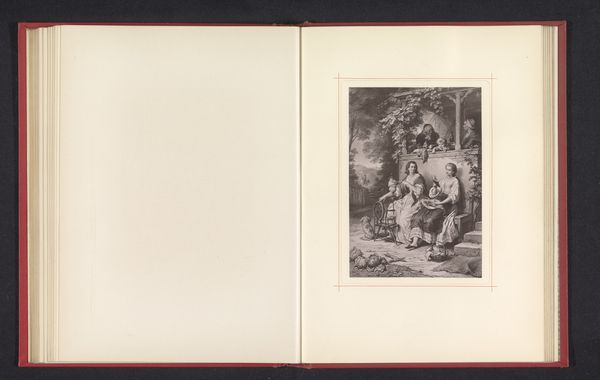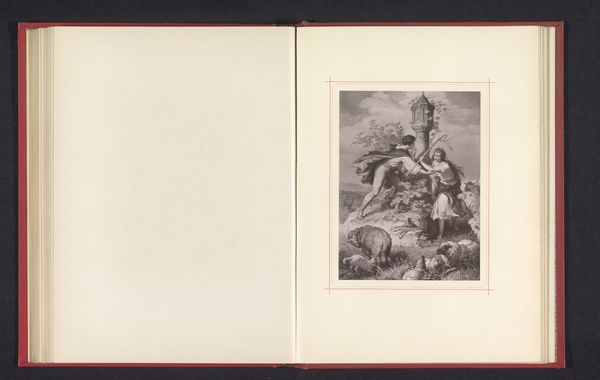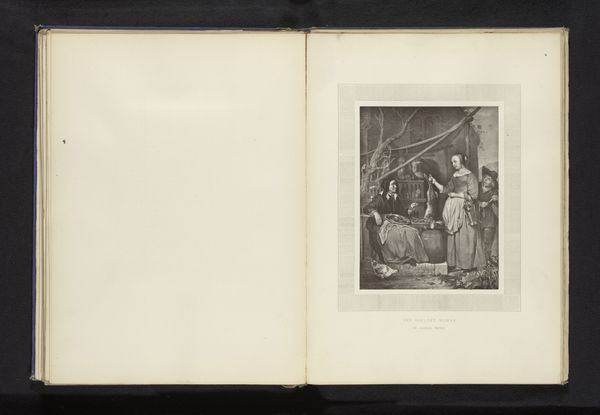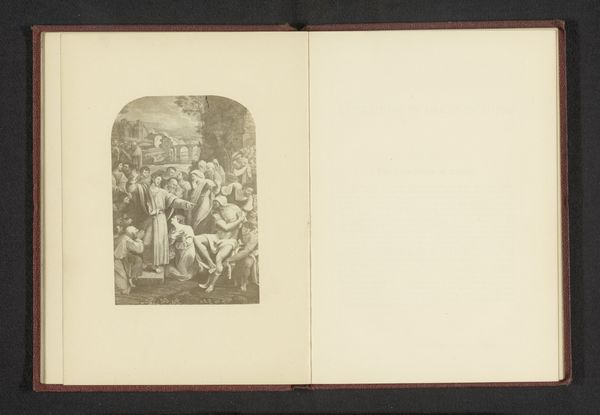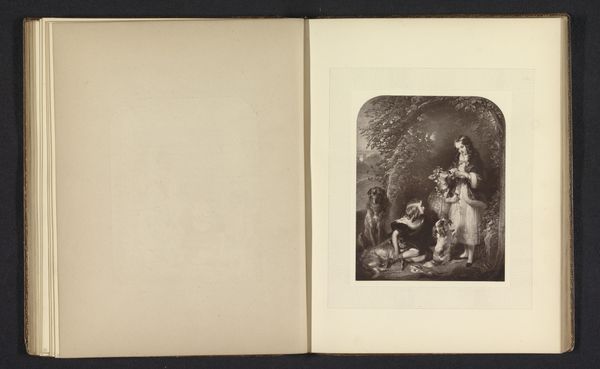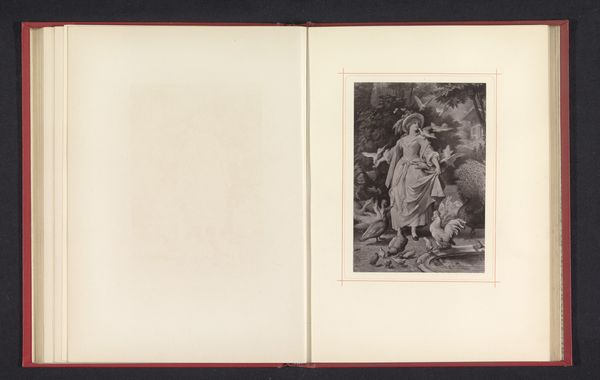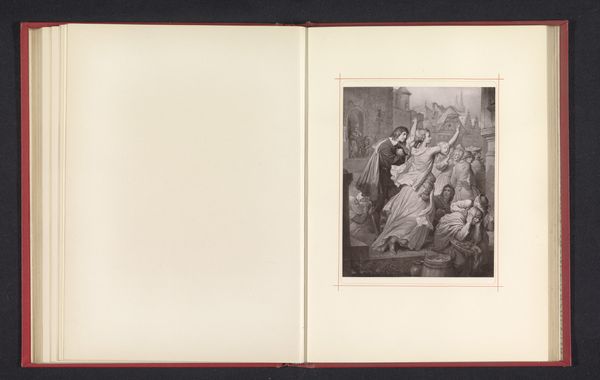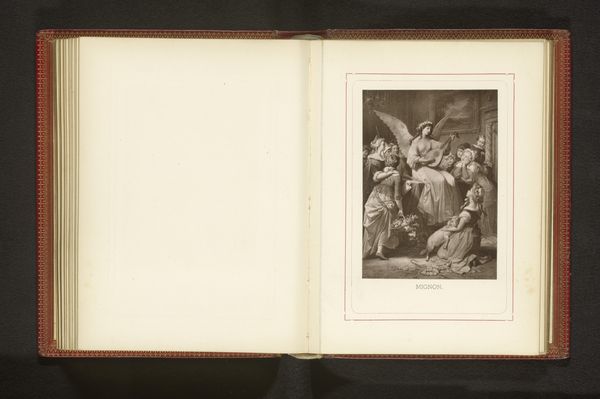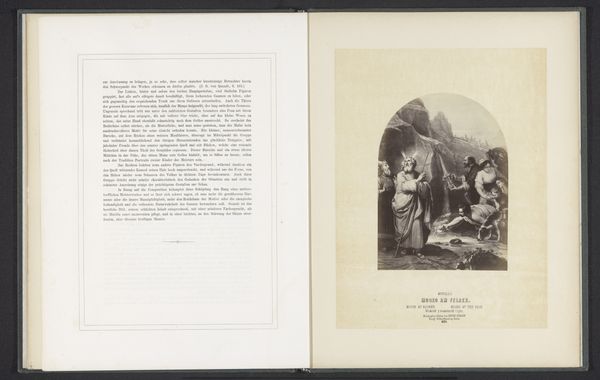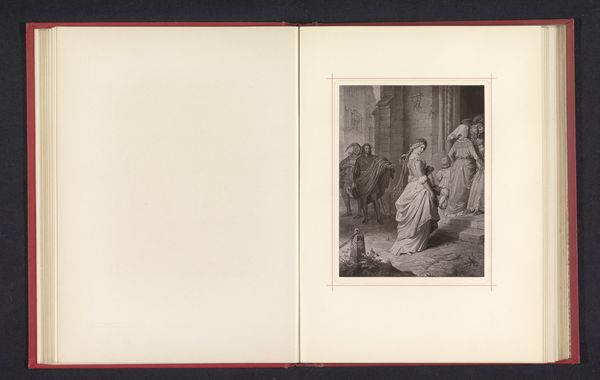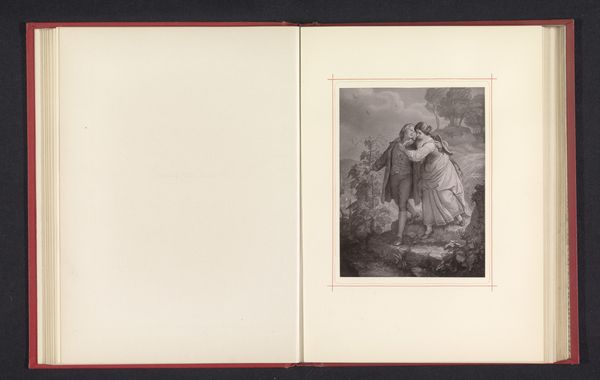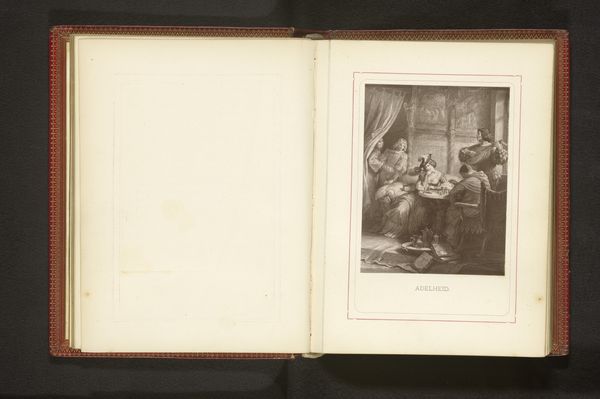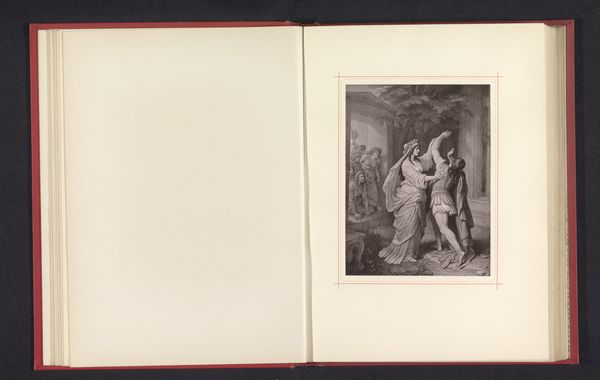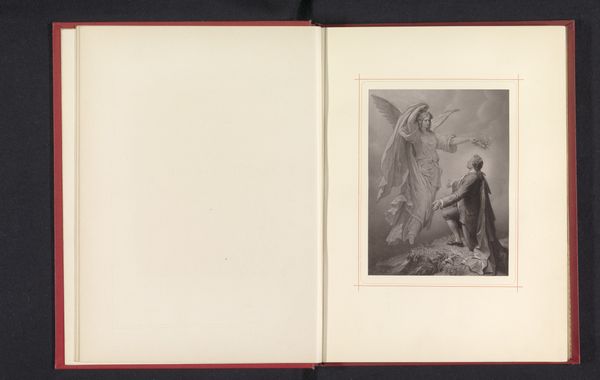
Fotoreproductie van een tekening, voorstellende Hermann ontmoet Dorothea before 1880
0:00
0:00
Dimensions: height 165 mm, width 120 mm
Copyright: Rijks Museum: Open Domain
Curator: Here we have an intriguing find: a photographic reproduction of a drawing, illustrating "Hermann and Dorothea." It’s from before 1880 and resides here at the Rijksmuseum. Editor: It strikes me as rather romantic, perhaps even a bit theatrical. Look at the figures posed in this idyllic landscape – the high contrast suggests this scene comes from a narrative weighted with importance. Curator: Indeed. Given its age and medium—likely an engraving or print based on the drawing—we need to think about its production and dissemination. Reproduction allowed broader access to imagery. The paper and ink, the labor involved in creating the drawing and then reproducing it – all this speaks to cultural values of the era. Editor: Exactly, it echoes that romantic notion of heroism against the backdrop of a tumultuous world. I’m particularly drawn to the positioning of Dorothea; her prominent position symbolizes the strength and centrality of women’s role even amidst the upheaval of conflict and shifting social dynamics. The man with his hand on his head symbolizes worry and hopelessness, a perfect mirror to Dorthea's resilient pose. Curator: I agree. There's also the socio-economic context: these types of prints often served a middle-class market, hungry for stories that reinforced national identity and offered moral lessons. Were these affordable? Mass produced? The materiality would tell us much about who had access. Editor: And to build on that, the depiction of everyday people, although stylized, points to the burgeoning genre painting style that aimed to capture ordinary lives infused with relatable emotions. It begs the questions of who got to create these images, and whose stories were centered. Curator: So, from ink and paper we glean not just an aesthetic snapshot but hints about labor, capital, and the dissemination of visual narratives. Editor: Precisely, uncovering narratives of identity, labor, and power relations inherent in an ostensibly straightforward genre scene. It demonstrates that we can trace even simple artworks to unveil a broader spectrum of historical and social contexts.
Comments
No comments
Be the first to comment and join the conversation on the ultimate creative platform.
